Eeek! I Forgot to Put the Paddles in the Bread Machine!
Last Updated on October 25, 2020
Has this ever happened to you? You put the ingredients in the bread machine. Then you turn on the machine and start to anticipate some great tasting bread. As you’re leaving the kitchen you notice something disturbing.
The bread machine paddles are not underneath the water, flour, yeast and other ingredients you’ve meticulously added to your machine.
Instead, the paddles are sitting on the kitchen counter. Eeek! What do you do now?
Here’s how I handle it with my Zojirushi.
If I notice the problem before the machine starts kneading, I thank my lucky stars and do the below. Otherwise, I throw everything out and start over.
Why? I just don’t feel comfortable with the viability of the yeast after it’s been subjected to the heat of the entire preheat cycle.
Taking Things Out of the Pan
Assuming the machine is at a pre-kneading point, I unplug the machine and take a look at the situation.
With the Zojirushi, the liquids are at the bottom of the bread pan. The flour is on top. What I call the “yeast nest” at the very top. It’s an indentation in the flour where the yeast is sitting.
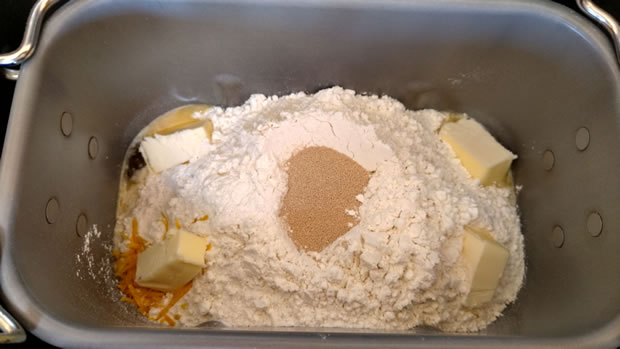
Here’s an example of a “yeast nest”. This is for apricot bread.
To fix this situation, I use two cereal bowls, a non-metallic spoon (never put anything metal inside the pan of the bread machine) and one large mixing bowl.
Into one cereal bowl, I carefully scoop out the yeast nest. (I always get a little extra flour at this stage. That’s OK.) I put dry flour into the second cereal bowl. I’ll use this as a foundation for the yeast nest when I put everything back into the pan.
Then I gently scoop everything else into the large mixing bowl. It’s messy. There’s no getting around it. I just do the best that I can.
In the end, I’ve emptied the contents of your bread pan into three bowls.
Then I take a damp paper towel and clean off the posts inside the pan.
Putting Things Back In the Pan
The first step is to add the bread machine paddles. When this happens I vow that I’ll never forget about them ever again. And I don’t forget either . . . at least not for the next year or so.
Next, I add the material from the mixing bowl. Again, it’s messy. I focus on getting the liquids at the bottom and the solids on top.
Then I add the cereal bowl of dry flour.
As a last step, I scoop out an indentation for the yeast and add the contents of the yeast nest bowl. Sometimes I’m able to slide the contents out so that the yeast ends up on top. Sometimes it’s under a layer of flour. (That’s what happened in the below photograph.) The goal is to make sure that the yeast is high and dry.
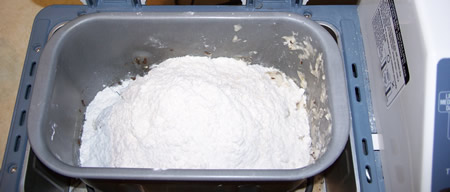
Okay, the yeast isn’t on the very top, but it’s toward the top and safely covered by a little flour.
At that point, I program my machine as I normally would.
With all the bowls and the moving of things, I might have lost too much liquid or too much flour and thrown off the recipe. So it’s important to check on the dough after five or ten minutes of kneading. The dough should be a smooth, round ball. I’ll add small amounts of water or flour to adjust it if necessary.
How does the bread turn out? I forget the paddles once a year or so. It’s always turned out fine.


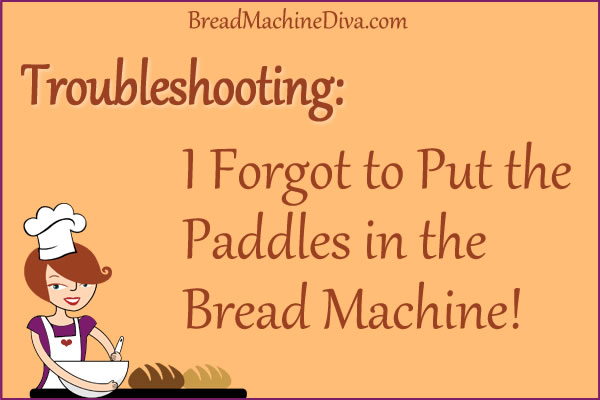
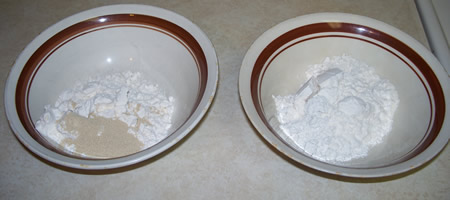
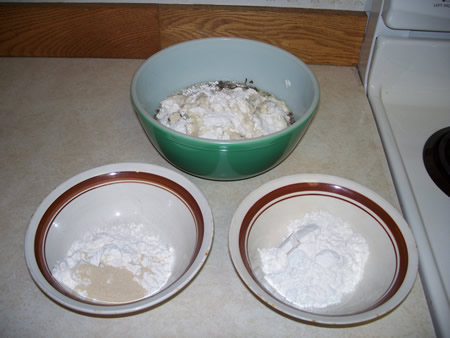
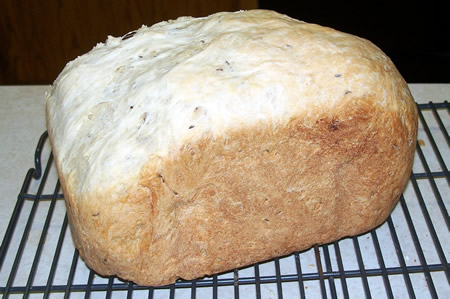
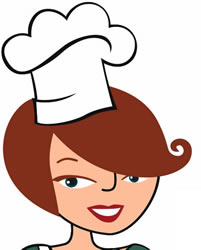
This is the 3rd time making bread! Thank you for this! I didn’t know what to do!
I’m so glad I could help!
Thank you so much! It’s nice to know that any mistake has most likely been resolved already, haha.
This post saved me. Thank you so much for sharing!